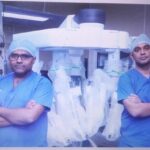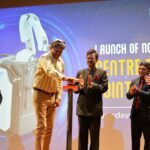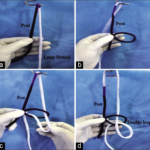What are the challenges involved in Urology and Uro-oncology surgeries?
Urological and uro-oncological procedures involve treatment for bladder dysfunctions, prostate cancer, and congenital abnormalities. These can be carried out via different methods of surgeries like laparoscopy, open surgeries, and robotic-assisted surgeries. Conventional methods like open and minimally invasive surgeries like laparoscopic surgeries pose more problems and require more analgesics in the form of painkiller as compared to robotic-assisted surgery. Robotic-assisted surgeries benefit urological and uro-oncological procedures by providing precise and smaller incisions. Especially in reconstruction surgery, which requires an approximation of the tissue, to the perfection so that it heals fast and early with minimum requirement of pain killers. These reconstructive surgeries are done for congenital or obstruction of the urogenital system or during procedures like orthotopic neobladder (neobladder reconstruction or new bladder reconstruction using intestine).
While doing open surgery, it requires longer incision to do reconstruction anastomosis and while laparoscopy, the surgeon faces a lot of difficulty in terms of – longer duration of surgical hours to do a complex reconstructive procedure, reconstruction of benign diseases like UJ obstruction and during the renal transplantation. In any reconstruction one requires exact approximation of the tissues and proper stitching (like machine made stitch in robotics) for the correct healing.This can be done like a tailor-made machine stitch using robotic-assisted surgery, with minimal dissection inside the abdomen. This in turn reflects in the shorter hospital stay, minimum doses pain killers and also it may not require any stenting or drainage procedure, due to the precision of the robotic surgery.


What makes Robotic-assisted surgeries the future of Uro-oncology surgeries?
Uro-oncology surgeries are complex procedures, as they involve organ removal and sometimes removal of surrounding tissues that might be affected. Such cases require bigger incisions, extensive dissection while performing open surgery, and take a longer duration of surgical time while performing laparoscopic surgery. The robotic-assisted surgical procedure provides 3D magnified vision of the anatomical area, minimal dissection, and minimal injury to surrounding tissues. The patient experiences less blood loss, reduced ingestion of analgesics, early post-operative recovery, and is on time for professional commitments post-surgery.
Oncological applications that can be performed using robotic-assisted surgeries can be extended from cancers of the kidney through the ureteric lesionsto the bladder lesions (TCC) and all the way up to the prostrate(cancer). Most of the genitourinary cancers can be operated by a robotic system with increased dexterity, high precision leading to minimal scarring as compared to laparoscopic procedure with a high chance of preservation of the surrounding/adjacent vital structures of functional importance.
How is robotic-assisted surgeries particularly helping in paediatric urology?
Paediatric urological surgeries mainly involve reconstructive procedures like pyeloplasty, uretic- re-implant, bladder augmentation, and obstructions of the certain part of the kidneys and the bladder. Often, the surgeries become more painful for children because of longer incisions,extensive dissection, the requirement of drainage tubes around the reconstructed area, and stenting of the anastomotic area. The procedure requires minimal dissection with maximum precision as the children’s anatomy is sensitive and overcrowded due to small space.
These surgical nuances are overcome by using robotic systems (current generation Da Vinci comes with 8 mm and 5 mm ports).For example, in a UPJ obstruction or during the uretic re-implantation procedure, which is commonly done for children, it is found that with increased dexterity and flexibility of 360 degrees and 540-degree movement of robotic instruments, the dissection around the anatomical area is minimized, i.e.,0.5-1cms perimeter.This not only helps in appropriate reconstruction but also prevent surrounding vital structure damage. Hence there seem to be less complications associated, minimum or no blood loss, and early recovery.
Do you see any difference in how you perform robotic-assisted surgeries in urology in the future, keeping in mind the current pandemic, are there any specific precautions that you are taking?
With the onset of the current pandemic, hospitals and surgeons are inclined towards performing minimally invasive techniques such as robotic-assisted surgeries. The procedure does not include contact with the patient in the OR and requires only one surgeon operating on the patient using a robotic console. The console is placed far enough, ensuring safety to the surgeon and patient.
Furthermore, there is the use of a few instruments in robotic-assisted surgeries, while the traditional method involves the use of 100 instruments that would have to be sanitized before and post-surgery. At our hospital, we follow the general precautions that are being used globally, such as- keeping the laminar airflow and operation room clean and no staff entering the room once the patient has been anesthetized. Keeping in mind the current pandemic time, we are performing tests 14days and 48 hours before the procedure.
How many robotic-assisted surgeries have you performed so far?
My stint with robotics-assisted surgery began in 2007, in Nadiad. During my tenure there, we performed over 100- 200 robotic-assisted surgeries and I played a critical role in developing the robotics facility. I have performed over 2000 laparoscopic procedures so far. However, I truly believe that robotic technology have made lives easier for surgeons and patients as well when compared to open or laparoscopic surgeries.
At Columbia Asia Hospital, we have performed over 54 cases using the robotics system in the last year. We have conducted over 16 varieties of uro-oncology and urological procedures. The difference between laparoscopic and robotic-assisted surgery is that- the doses of pain killers required are reduced drastically in robotics compared to laparoscopy. In robotic-assisted surgery, the duration of hospital stay for patients has reduced by 50 percent, the dissection and damage done to the surrounding structures have reduced nearly by 50 percent compared to laparoscopy.
Could you highlight few benefits of robotic-assisted surgeries for patients through an example?
A 28-year-old lady from Yemen came to me for consultation after she was facing frequent pain on the right side of her abdomen.In her evaluation conducted in Yemen, it was found that she hada cyst in the kidney towards the hilum where the blood vessels are situated. She was given pain killers and was under observation for one – and a half years. As the patient began having more pain, discomfort and started passing blood in the urine, she was referred for surgery at Columbia Asia Hospital.
We did an advanced evaluation with CT scan for the final conclusion and diagnosis. We looked at options like Open, laparoscopic and Robotic-assisted surgery. In this case cyst/diverticulum which was pressing the kidney on the ureter was causing obstruction to the kidney- that was leading to more frequent and severe pain. Also, the diverticulum was situated in a very complex situation- i.e., where all the blood vessels from the main abdominal vessels run towards the kidney. So, this complexity of the situation was best performed using robotic-assisted surgery.
This procedure was comparatively easy, as we could separate the blood vessels because of the movement of the robotic instrument which is 540 degrees, thus mobilizing the rotation of the instrument to its perfection, and we could dissect out the diverticulum from the normal tissue. Post the surgery, the patient needed suturing, which was also done efficiently by using robotic arm and instrument. The procedure was completed under one and a half hours, where the patient required only 36 hours of admission and three doses of pain killers.













